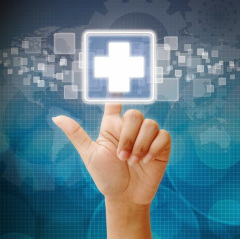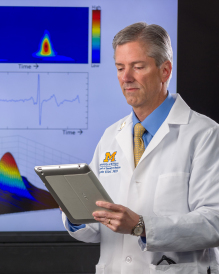 In healthcare, we constantly seek new ways to deliver and improve care. Countless ideas have already been tried and tested, and people often think that coming up with the next great innovation requires thinking ‘outside of the box.’ This notion has been instilled in most of us from a young age, and those in all industries – not just healthcare – often strive to show their creativity through this approach. However, in my experience, thinking outside of the box doesn’t always lead to the best new ideas. Sometimes, we need to focus on thinking better inside the box.
In healthcare, we constantly seek new ways to deliver and improve care. Countless ideas have already been tried and tested, and people often think that coming up with the next great innovation requires thinking ‘outside of the box.’ This notion has been instilled in most of us from a young age, and those in all industries – not just healthcare – often strive to show their creativity through this approach. However, in my experience, thinking outside of the box doesn’t always lead to the best new ideas. Sometimes, we need to focus on thinking better inside the box.
Tag Archives: data analytics
Keeping up with (and Getting Ahead of) an Ever-Changing Healthcare Model
 At this year’s annual HIMSS conference, a common topic of discussion was around how to continue to bring the technological and medical aspects of healthcare together to evolve, grow and support one another.
At this year’s annual HIMSS conference, a common topic of discussion was around how to continue to bring the technological and medical aspects of healthcare together to evolve, grow and support one another.
Each semester, I share with my Health IT students the many reasons that it is such an exciting time to be in healthcare. As we transition from a volume-based to a value-based incentive model, healthcare is going to look significantly different by 2020. This transformation is no longer a wish, it is no longer an option; it is our collective future. People who were previously one-foot-in and one-foot-out will be fully planted in the value-based healthcare model.
Why 2015 is the Worst Time to be a Physician
With the ONC’s recent release of their 10-year interoperability vision, it might seem like the industry is starting to make things easier for clinicians. In reality, 2015 is starting off to be one of the worst times ever to be a physician. Interoperability is a critical issue to support a transition from fee-for-service to value-based care. Physicians will eventually be reimbursed around their ability to impact clinical outcomes, so the need for clinically relevant information at their fingertips is mission critical.
Healthcare in South Africa – Two Systems, Common Challenges
When it comes to mHealth, most industrialised nations such as the U.S. and Europe have a head start. Money for healthcare technology investments is available, the infrastructure is in place, and most of the population is already engaged in the healthcare system.
As a country of about 52 million people, South Africa shares many characteristics with its larger brethren. There is a mix of public and private healthcare providers and health insurance plans, physician shortages in key areas, and South Africa is beset by many of the same chronic diseases that industrialised countries face (cardiovascular and obesity-related diseases, diabetes, etc.).
Today’s Pressure Breeds Tomorrow’s Solutions
It is no secret that health systems are under intense pressure to deliver better outcomes at lower costs, and standardizing acute care workflow will only carry providers so far. Truly moving the needle on cost and outcomes will require a fundamental redesign in care delivery; otherwise, health systems may well find themselves left out. Care keeps shifting to environments in which hospitals have less influence: what was once critical care can now be managed in an in-patient unit; what was once in the hospital is now in an office; what was once in the office is now at home.
Creating a Friendly Environment for Adoption of Clinical Decision Support
In recent years, our ability to stream large amounts of data in real-time has improved dramatically. This enhancement can transform how clinicians offer care by sourcing unprecedented opportunities for clinical decision support. However, the capability to process, store, and display data in and of itself does not transform care. Rather, it is how the clinicians adopt and apply decision support that will make all the difference to patients. However, the current environment must be altered to create a clinical decision support-friendly climate.
Embracing Security Challenges
 Over the past year, the perception of mobile technology in healthcare has changed dramatically. mHealth is now being recognized as a tool that can help address the challenges our healthcare system is facing, including a shortage of caregivers, an influx of newly insured patients, decreased reimbursements and readmission penalties. Historically, there have always been barriers that kept hospitals from making the leap to mobility – lack of infrastructure, costs, or the fear of security breaches, among other reasons. Yet as mobile technology becomes deeply ingrained in our day-to-day work and social lives, healthcare is following suit and migrating toward mobility as a component of care delivery.
Over the past year, the perception of mobile technology in healthcare has changed dramatically. mHealth is now being recognized as a tool that can help address the challenges our healthcare system is facing, including a shortage of caregivers, an influx of newly insured patients, decreased reimbursements and readmission penalties. Historically, there have always been barriers that kept hospitals from making the leap to mobility – lack of infrastructure, costs, or the fear of security breaches, among other reasons. Yet as mobile technology becomes deeply ingrained in our day-to-day work and social lives, healthcare is following suit and migrating toward mobility as a component of care delivery.
However, concerns about security remain at the forefront. According to data from the Department of Health and Human Services (HHS), more than 41 million people have had their protected health information compromised in a reportable HIPAA privacy or security breach. Additional data from the 2014 Healthcare Breach Report from Bitglass suggests that 68 percent of all healthcare data breaches are due to device theft or loss and 48 percent of breaches involve a laptop, desktop or mobile device.
Transformation in 2015: Focusing Technology on the Patient
 We are currently experiencing the biggest transformation in healthcare ever. Technology plays a significant role as an enabler of this transformation, but will not drive it alone. Improving patient care and driving toward patient engagement are crucial goals in this next phase of the healthcare industry. To make adoption ubiquitous and implementation effective, there are several things we should focus on as we dive into 2015:
We are currently experiencing the biggest transformation in healthcare ever. Technology plays a significant role as an enabler of this transformation, but will not drive it alone. Improving patient care and driving toward patient engagement are crucial goals in this next phase of the healthcare industry. To make adoption ubiquitous and implementation effective, there are several things we should focus on as we dive into 2015:
Harnessing the Power of Big Data with Digital Health Partnerships
 In today’s digital world, electronic patient data is growing exponentially and moving faster than healthcare organizations can imagine. At the same time, clinicians suffer from information overload, and high-volume and increasingly complex clinical patient loads, alongside dwindling time and resources.
In today’s digital world, electronic patient data is growing exponentially and moving faster than healthcare organizations can imagine. At the same time, clinicians suffer from information overload, and high-volume and increasingly complex clinical patient loads, alongside dwindling time and resources.
Now more than ever, the pressure is building to harness the power of big data and digital technologies to help clinicians make faster, patient-centric decisions that increase quality of care and enhance health outcomes all while decreasing costs.
Mobile solutions that support our clinical (and life) workflow
There are more mobile devices than there are people on the planet. Many of us look at our phones more than 70 times a day. We bring them with us everywhere we go – to the movies, to our children’s soccer games and to work.
Many of us even have work environments that allow us to ‘bring your own device.’ If that is not an option, our work devices (thankfully!) are looking more and more like our personal devices. And in healthcare, we are now successfully addressing challenges to building mobile healthcare solutions that support our natural use and knowledge of these devices in our life flow.
